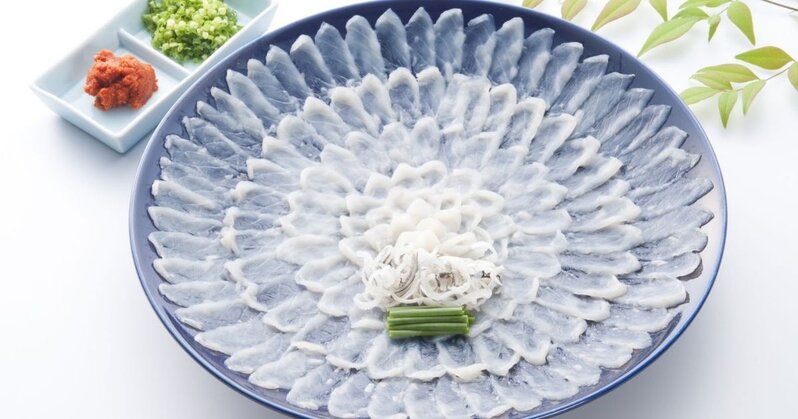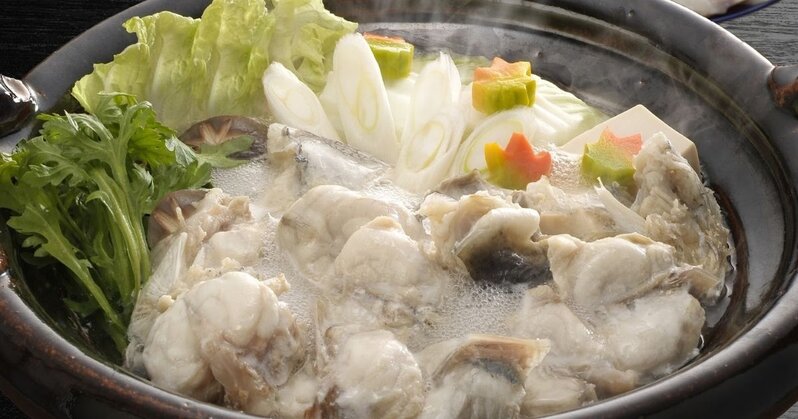While fugu, or pufferfish, is considered a prized delicacy in Japan today, it wasn’t too long ago when it had a bad reputation for being poisonous. In ancient times, before people discovered how to safely prepare the fish, there were many fatalities, leading to a countrywide ban on fugu consumption from 1598 to 1888. These days, fugu is still prohibited from being prepared at home and can only be prepared by highly trained, licensed chefs.
If you get a chance to try fugu, you’ll discover that on its own, fugu has a light — almost subtle — flavour, as well as a distinctive texture that fugu fans often rave about. The texture of food plays an important role in Japanese cuisine, so much so that there are many words in the Japanese language used to describe the texture of food.
Typically consumed in the wintertime, fugu is a very versatile ingredient and can be enjoyed in a variety of ways.
Tessa (Fugu Sashimi)

Tessa is cut so thin that the plate can be seen through the slices. (Photo from: Yamaguchi Prefectural Tourism Federation)
The best way to savour the pure, clean flavours of fugu is to have it sashimi-style. Employing a technique known as usuzukuri, highly skilled chefs use knives with exceptionally thin blades to cut the fugu into thin, translucent slices. Instead of wasabi, which usually accompanies sashimi dishes, fugu sashimi is served with a side of soy sauce, grated daikon, sliced scallions and vinegar.
Tetchiri (Fugu Chiri nabe)

Fugu hot pot is called tetchiri, also known as fugu chili. (Photo from: cheetah via Photo AC)
What can be more comforting on a chilly winter’s day than a pot of soup chock full of nourishing ingredients? Also known as tetchiri, fugu hotpot involves cooking the fish with the bones still intact in a kombu broth to increase the flavour of the soup. Once the fish is cooked till it’s tender, add the vegetables of your choice. To round off your meal, add some cooked rice to the leftover broth in the nabe pot, allowing the flavour of the cooked fugu to permeate the rice and create a flavourful dish of zosui (Japanese rice soup).


